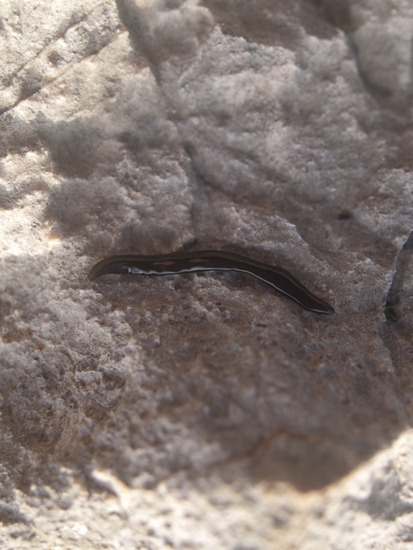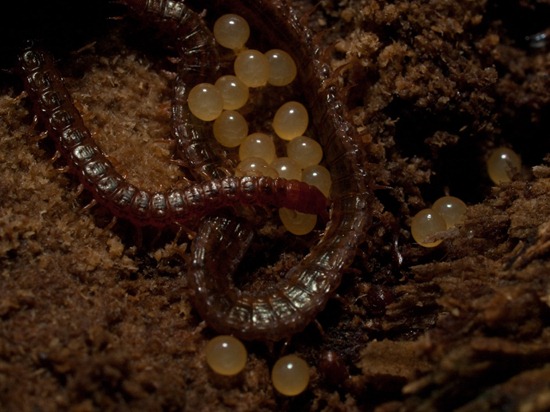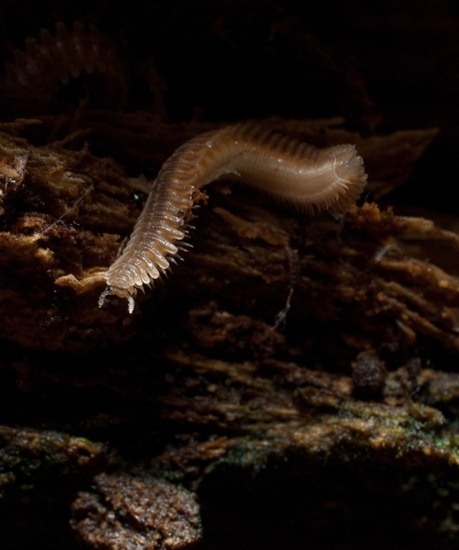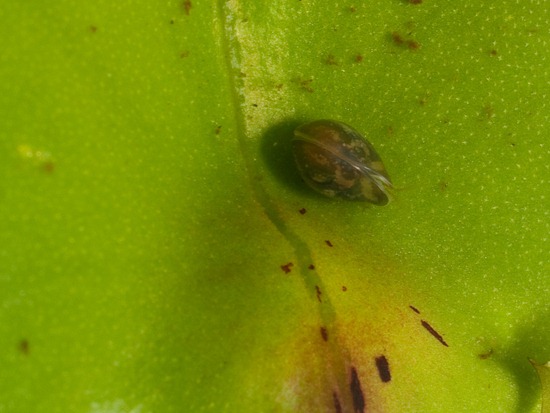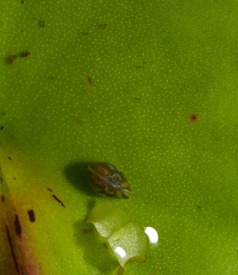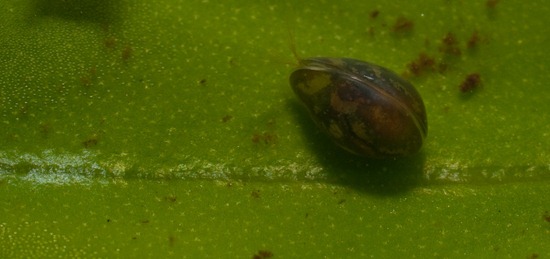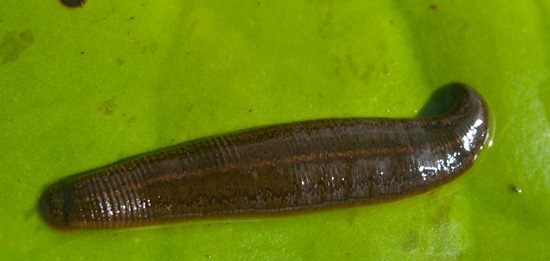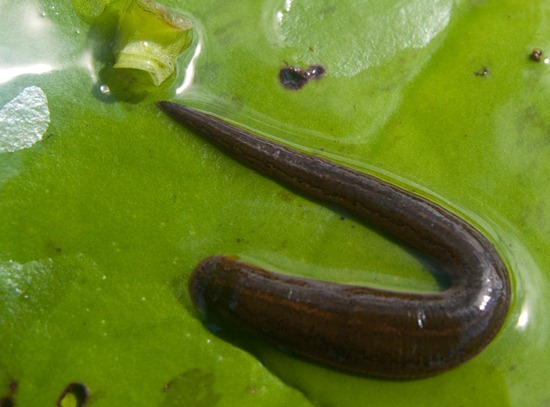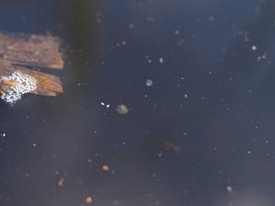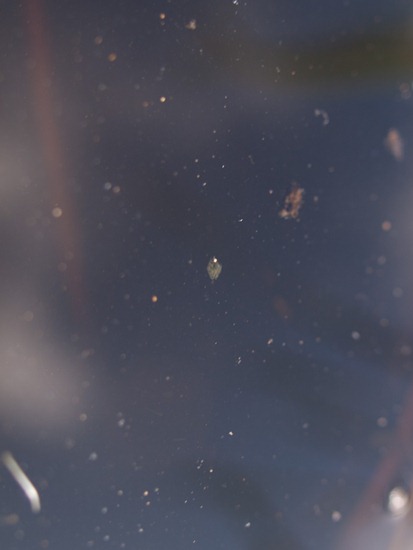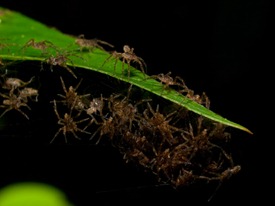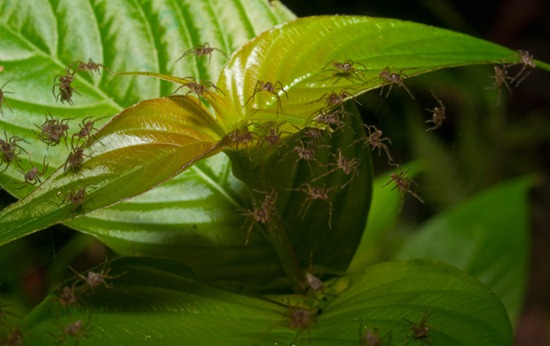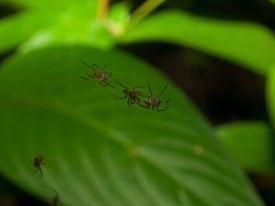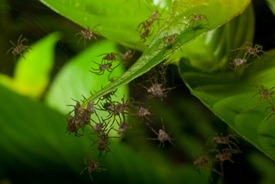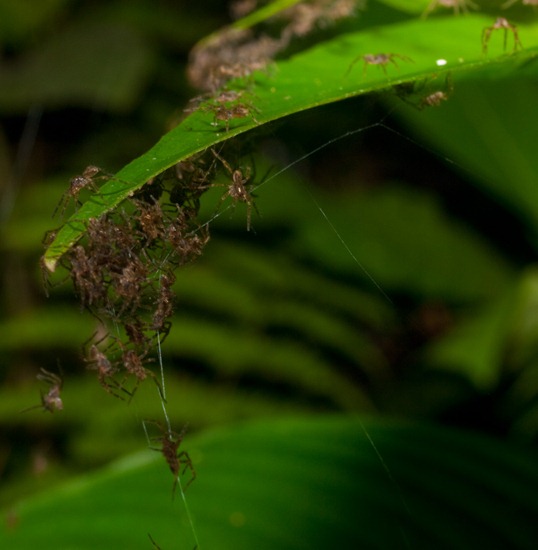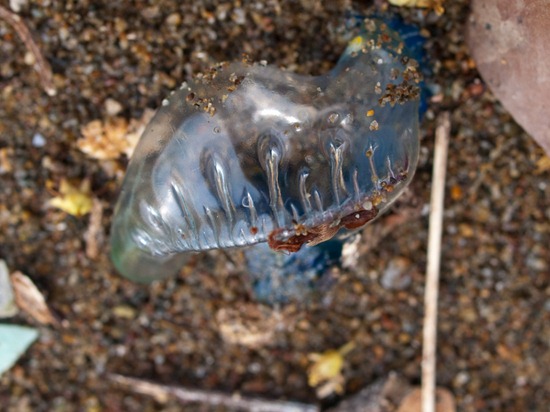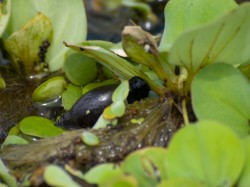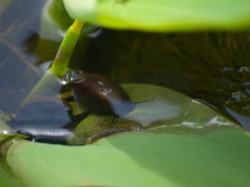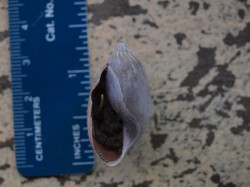I discovered this large, terrestrial flatworm on top of the Guaycan overlook at Palo Verde. I wonder if it’s one of those cool predatory Geoplanids!?
Tag Archives: Invertebrates
Centipede and Eggs
Millipede
Ostracoda
Leech
Cruisin’ ostracod
Tons of spiders
Man-O-War
Limpkin feeding sites
Last updated:
23 May 2009
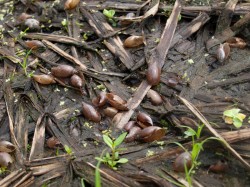
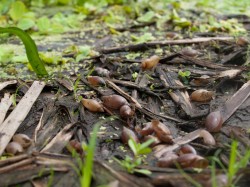
Figures 1 and 2 show a potential limpkin feeding site. I discovered 3 sites, one of which I had observed a limpkin fly away from. Before flying off, the limpkin was within 10 m of me, so I’m fairly confident that it had been standing at that location, but I was unable to observe a limpkin actually feeding at one of these locations. The shells are from a very thin-shelled aquatic snail that appear to be extremely abundant in a variety of vegetation types. I have encountered the snail in Pistia (Figure 3), an unknown emergent plant (see Massive herbivory; Figure 4), and Eichhornia.
The snail has no operculum and, when handled, doesn’t usually escape into its shell. I’m unsure whether or not the snail is a scraper, consuming epiphytic biofilm, or consumes macrophytes proper. If they snails are scrapers and are limpkin prey, there may be an interesting interaction occurring; Apple snails tend to consume macrophytic tissue and scraping snails have been shown to increase macrophyte growth. It may be far fetched, but could apple snail predation effectively farm these snails?
Reduced apple snail density = greater macrophyte biomass = more surface area for biofilm formation = great thinned-shelled snail densities
Other than apple snails at snail kite perches, there was one other species of snail present. Figure 5 shows a snail shell found along with apple snail shells at a snail kite perch. Although this snail may also have been prey, several individuals were found lodged within apple snail shells, so these snails may have died while consuming left over apple snail tissue or attempting to escape drought. The shell is much thicker than the shells found at the limpkin sites discussed in this post, and is not likely the same species.
|
|
Dry Season Crabs
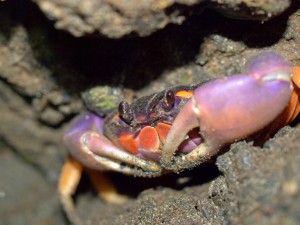
At Campanario, in the Osa Peninsula, there were land crabs everywhere during the night. They were beautifully colored and I caught a couple of them consuming fallen, decomposing leaves near a stream, which is of course interesting to me. They were much more abundant this March than in January.

